As the world continues to become more sustainability-minded and eco-friendly, more and more secondhand selling apps have emerged. This ultimately promotes the buying and selling of pre-loved items to create a circular consumer economy when it comes to online shopping.
This also allows reselling business owners to make extra cash in their pockets, and buyers receive a good deal in the current tough economic times.
Poshmark is one of the most common and well-known secondhand selling platforms, but what about other apps like Poshmark? As someone who has been shopping and selling secondhand online for close to 10 years, I've had time to experiment with other apps.
So in this post, we will go over 25 of the best Poshmark alternatives that I have used, weighing the pros, cons, and everything in between.
Jump to:
- 1. eBay
- 2. Mercari
- 3. Depop
- 4. Facebook Marketplace
- 5. Tradesy
- 6. Vestiaire Collective
- 7. Rebelle
- 8. Kidizen
- 9. Craigslist
- 10. Vinted
- 11. Grailed
- 12. Curtsy
- 13. Etsy
- 14. OfferUp
- 15. 5Miles
- 16. Varage Sale
- 17. Nextdoor
- 18. thredUP
- 19. The RealReal
- 20. Thriftly
- 21. Clothes Mentor
- 22. Shopify
- 23. Zara Pre-Owned
- 24. Patagonia Worn Wear
- 25. Vendoo
1. eBay
eBay is easily one of the most popular marketplaces worldwide. eBay allows sellers to list a wide variety of items, from used clothing and shoes, to household items and beauty products, textbooks, and even larger items like furniture and even cars.
How eBay Works
Buyers and sellers can sign up for a free eBay account. In addition, eBay does offer a premium service through their paid store subscriptions.
Although eBay is one of the most popular, it can be one of the most complex sites when it comes to listing and selling. The eBay marketplace form is one of the longest and most time-consuming due to the number of fields sellers have to fill out.
However, if you stick around for the eBay learning curve, it can really pay off due to its flexibility for sellers to structure their listings along with its large user base.
Site Fees
On eBay, sellers are allowed 250 free listings per month. After that, each listing will have a $0.30 insertion fee tacked on.
Each eBay seller fee, also known as a final value fee, is variable. The percentage that sellers are charged per sale depends based on the category that the item is in, and the sale price. Sellers can generally expect to pay between 3%-15% of the sale price.
2. Mercari
Mercari is another secondhand online marketplace for selling a wide variety of items. Mercari is a similar platform to eBay, although much more simple. That is why this is typically the best place to start for newbie online sellers.
Mercari has fewer fields to fill out in the marketplace form. Additionally, Mercari makes shipping easy by sending the shipping label directly to you, while eBay does not.
If you’re interested in hearing more about these first two platforms, you can read our deep dive into all the similarities and differences in the showdown of Mercari vs eBay.
How Mercari Works
Users can sign up for a Mercari account for free. There are no insertion fees, so sellers can list an unlimited number of items for free.
Mercari offers sellers two ways to close the sale: Mercari shipping and Mercari local. Although, buyers do not have to choose between the two and can have their items listed with both delivery methods.
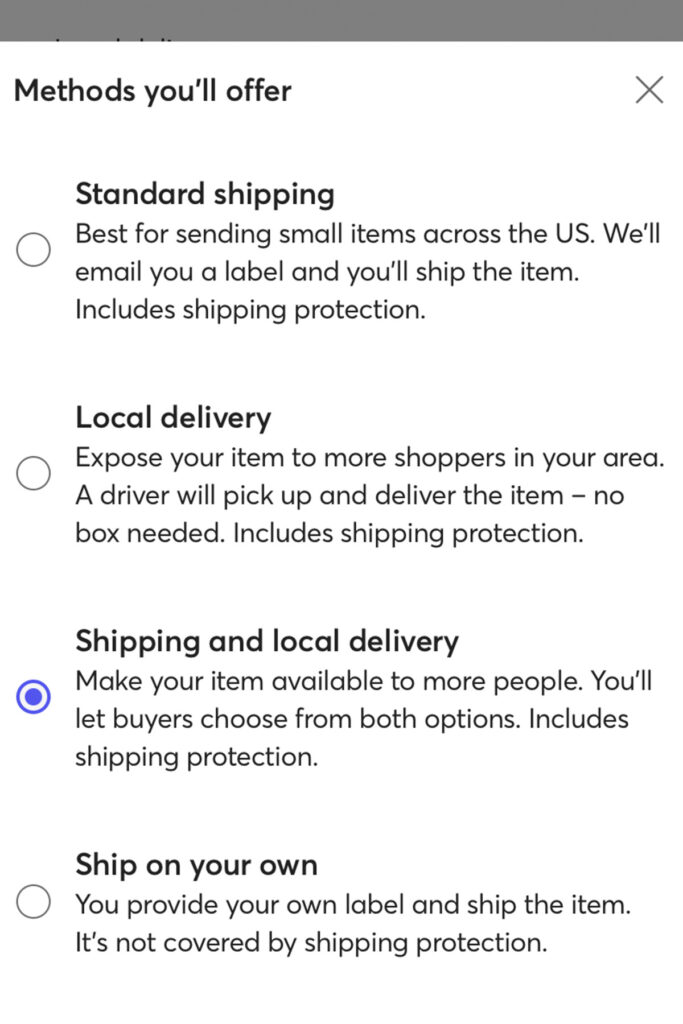
With Mercari shipping, the seller can choose whether they want the buyer to pay shipping or offer free shipping. Mercari Local has increasingly become more popular as more learn about the feature.
Sellers can sell any item via Mercari Local, as long as it is able to fit in a standard-size trunk of a car. If they make a sale, Mercari will facilitate a delivery service driver picking up your item and delivering it to your buyer.
Mercari Seller Fees
On Mercari, sellers can expect a 10% selling fee plus a 2.9% + $0.50 payment processing fee. In total, this comes out to about 13% of the sale price. This is cheaper than Poshmark’s selling fees, which are 20% per sale.
Mercari does not charge any listing fees or insertion fees, unlike eBay.
3. Depop
Depop has become an increasingly popular platform with the younger generation and with vintage clothing. Depop is a platform available in many places worldwide, with about 35 million users.
How Depop Works
Depop sellers can sign up for free on the mobile app or website. This platform has a short and simple marketplace form. It also has the least amount of picture slots available when compared to most platforms, with 8 opportunities to upload photos of your items.
On Depop, you can message the sellers and negotiate prior to purchasing an item. If you're looking for a more in-depth comparison, you can read about Depop vs Poshmark.
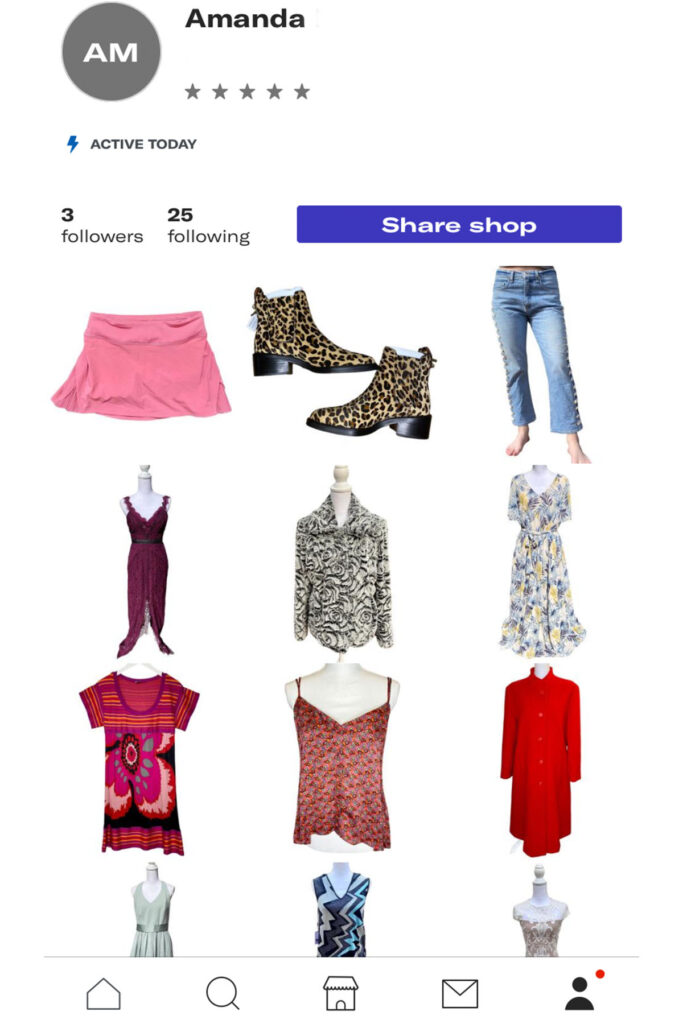
Depop Fees
Depop fees are structured similarly to Mercari. There are two different fee types: a seller fee of 10%, and a processing fee of 3.3% + $0.45.
As you can see, Depop takes about the same as Mercari does, which is still less than Poshmark’s seller fees.
4. Facebook Marketplace
Facebook Marketplace is a great platform for sellers wanting to list items for potential buyers both locally and afar. This platform started out mainly local, making the term porch pick-up (PPU) famous.
However, sellers can also list their items as available for shipping, opening up the potential customer base to a national level.
How Facebook Marketplace Works
Facebook Marketplace sellers can begin listing their items straight from their Facebook profile. The marketplace form is one of the quickest and easiest of all of the apps like Poshmark. Here, sellers can choose both local and shipping, or just one or the other.
If you choose the local route, be sure to put safety practices into place for your meet-ups or porch pick-ups. Always let another person know where and when you are meeting someone, and if the buyer is doing a porch pick up, consider requesting the money beforehand.
Facebook Marketplace Fees
Facebook Marketplace charges the least amount of seller fees at 5%. However, it has become increasingly difficult to generate sales on the platform as a consensus from the reseller community as a whole.
There are no fees tacked on for local transactions.
5. Tradesy
Tradesy is no longer in operation as a platform, but no worries… Just read #6.
6. Vestiaire Collective
Vestiaire Collective, which recently acquired Tradesy, specializes in luxury fashion. This platform has a large, world
wide user base and is known for its high-end fashion items. You can expect to see brands like Louis Vuitton, Gucci, Chanel, Prada, and more.
How Vestiaire Collective Works
Vestiaire Collective has a high standard for its sellers. First, all listings have to go through a lengthy review process. There is a certain order that Vestiaire wants its items to present in on the marketplace form.
Vestiaire also does not allow the use of stock photos. It will reject listings that do not follow their requirements.
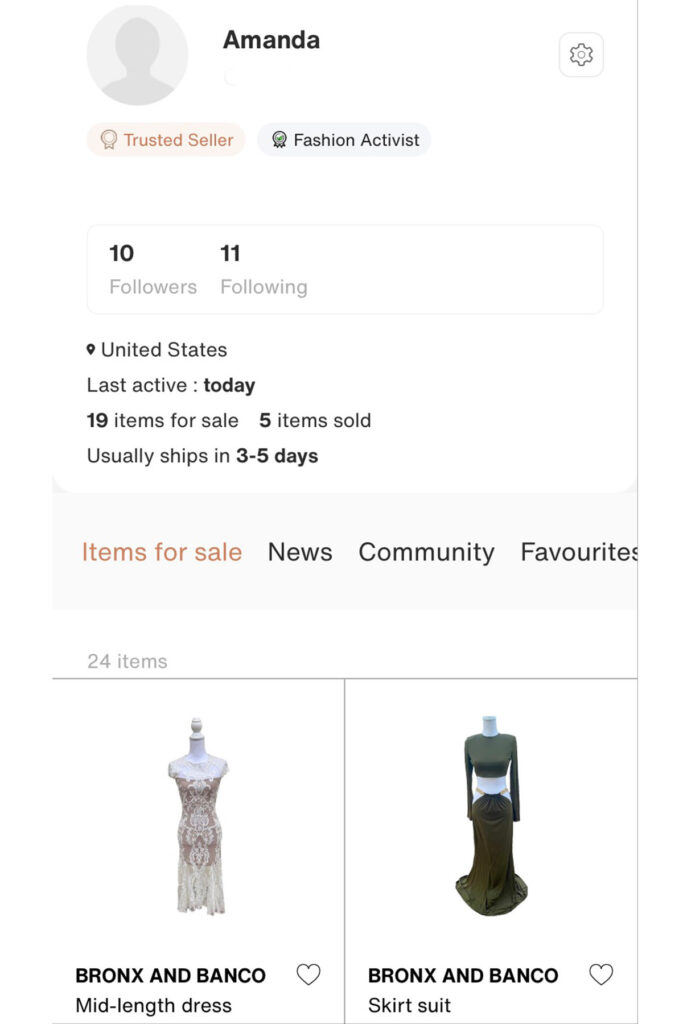
Vestiaire Collective Fees
The amount of fees that the seller has to pay depends on the item's sale price. For items with a sale price of less than $80, Vestiaire will take $12 from the sale. Plus, there is a payment processing fee which results in another $3 being taken from the seller’s profits.
More expensive items, specifically ones that are sold between $80-$13,000, will come with a seller fee of 15% of the sale price. On these sales, the seller can expect another 3% taken out of their earnings for the payment processing fee.
7. Rebelle
Rebelle is next on our list of apps like Poshmark. This is another platform that specializes in the niche of luxury fashion and designer items.
How Rebelle Works
Users start by signing up for a free Rebelle account. From here, sellers decide whether they want to sell their items themselves or use Rebelle’s concierge service.
If you choose the concierge service, it really is the full package. Rebelle performs all of the picture taking, listing, customer service, shipping, and all other aspects of selling the item for you.
Rebelle Site Fees
Rebelle states sellers who perform the selling process on their own get to keep 80% of the sale price. This is comparable to Poshmark’s fee structure.
Sellers that want a more hands-off approach with the concierge service can expect to pay an extra €15 on top of the seller fee.
8. Kidizen
Kidizen is a unique platform because it is one of the only platforms specializing in baby and kid clothing items and accessories. Additionally, there is an entire section for moms. That is why this platform is a great app for any mom looking to make extra money on the side.
How Kidizen Works
Kidizen also offers two ways to sell. One way is by the seller doing the process by themselves. Alternatively, sellers can opt to work with a Kidizen Style Scout. The Style Scout will do all of the heavy lifting and selling for you.

Kidizen Site Fees
Sellers on Kidizen can expect to have a deduction of 12% + $0.50 from the final sale price if they choose to sell themselves. Additionally, sellers are responsible for paying for and obtaining a shipping label for their sales.
This shipping practice is different from most platforms which either provide a shipping label or have a shipping label hub within the app or website.
9. Craigslist
Craigslist stems back all the way to its humble beginnings in 1995. The platform has evolved over time, offering a wide variety of listing types from services, discussion forms, housing, jobs, and of course, buying and selling items.
How Craigslist Works
Anyone can navigate to the Craigslist app and start selling. It is easy to start and fill out the listing form. You do not even need an account to start selling, just an email so you can reply to inquiries.
Sellers can but do not have to show their phone number and address. Just like Facebook Marketplace local, keep in mind safe meet-up and porch pick-up strategies.
Craigslist Fees
Craigslist does not charge a fee to sellers on the platform. However, keep in mind you will need to claim any earnings that are profit on your yearly taxes.
This does not apply to sellers who are just clearing out clutter, for example, if you bought your child’s bike for $100 5 years ago and now you’re selling it for $20.
However, I am not and do not claim to be a tax expert so make sure to consult with a professional regarding this topic.
10. Vinted
Vinted is another platform for selling new and pre-loved secondhand items. The app has grown exponentially since being founded in 2008, now boasting a community of over 75 million users in total, with a smaller number being monthly active users.
It is making its way from the United States to across the world with 16 supported countries at this time. Like most secondhand platforms, Vinted has a strong social mission of supporting circular fashion and sustainability.
How Vinted Works
After you sign up for free on the app, you’re ready to start selling. All you have to do is upload your pictures, describe the item, set your selling price, and wait for sales.
After the item sells, Vinted will send you a prepaid shipping label to your email address. After your item(s) sell, pack up your sales, put the shipping label on, and take your item(s) to your local post office.
Vinted Fees
You’re never going to believe this. Vinted charges NO seller fees. That’s right, the price you sell the item at is what you get.
Instead of a seller fee, Vinted has a “Buyer Protection Fee”. With this structure, the buyer pays a 5% fee on top of the item price.
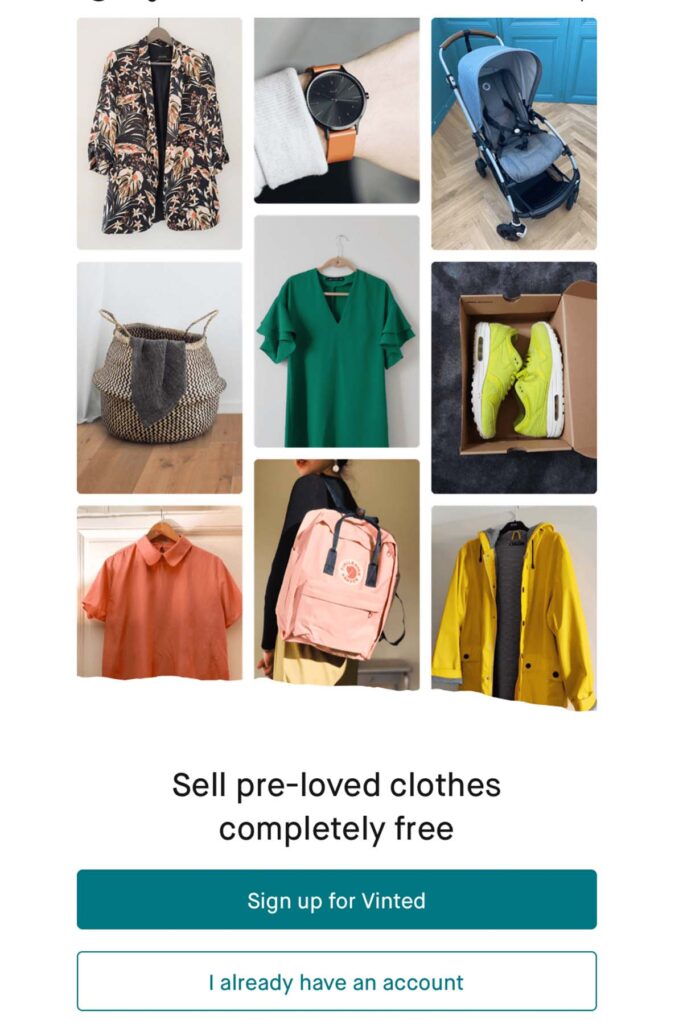
11. Grailed
Grailed is a platform with a mission to make clothing affordable and accessible to all. That is why all items on the platform are pre-loved, or secondhand.
Grailed used to solely sell men’s fashion, but is now accepting womenswear, too.
How Grailed Works
Like many of the other platforms, sellers can sign up for a free account via the Grailed app. Start a listing, upload at least 3 photos (more photos are better though), fill out the details, set your price, and publish.
The listing will be reviewed before it is available to others for purchase. All items must be authenticated by the platform, if applicable.
Grailed Fees
Grailed is straightforward when it comes to fees. This platform charges a flat 9% commission fee to its sellers on all sales.
12. Curtsy
Curtsy is an online selling app that caters to women buying and selling secondhand, trendy items.
How Curtsy Works
Curtsy advertises sellers the ability to be able to fill out the marketplace form in under one minute. Sellers can choose whether to offer free shipping or have the buyer pay for shipping.
This platform has one of the quickest payment turnaround times, releasing the funds to the seller when the package is scanned and starts tracking, not after the item is delivered.
Curtsy Fees
Curtsy fees used to be comparable to Poshmark fees, but have changed into a more lucrative form. Sellers pay 5% of the sale price + $1 for each sale, while buyers pay the same exact fees.
That way, adding fees to the buyer helps keep more money in the seller's pockets.
13. Etsy
Etsy has established itself as a platform for handmade and other unique items. This platform is one of the only online marketplaces that offers an easy purchase of digital items to be delivered instantly to your inbox.
How Etsy Works
Sellers can sign up to list their items on Etsy. Items that typically perform well are personalized and other handmade items like t-shirts, ornaments, crochet items, digital downloads, and more.
Etsy Fees
Etsy, like eBay, charges its sellers a $0.20 listing fee for each item. On top of the listing fee, there is a 6.5% transaction fee charged to sellers for all sales.
Sellers also have to purchase their own Etsy shipping label, whether that is through Etsy itself or another third-party platform like Pirate Ship.
14. OfferUp
OfferUp is a platform just like Craigslist, where all different categories of items can be listed. In addition, there is an entire section for local jobs.
How OfferUp Works
After you post an item, a potential customer can reach out to you via message. Both the buyer and seller can view each other's profiles to vet out authenticity.
OfferUp Fees
There are no seller fees associated with OfferUp. You get to keep the full price of the sale.

15. 5Miles
5miles operates similarly to Facebook Marketplace Local and Craigslist. This app specializes in local buying and selling.
5miles prides itself in differing from other local selling platforms due to its emphasis on safety. Their features include user ratings, Facebook verification, and phone number verification.
How 5Miles Works
Sellers can download the app or use the web browser version for free. Sellers can list items in many categories including auto, fashion accessories, electronics, home and garden, and so many more.
5Miles Fees
5miles currently does not charge its sellers a fee for local meet-up sales. This is likely because 5miles does not include a secure payment platform for these transactions.
16. Varage Sale
As if there weren’t already enough platforms to choose from, let’s talk about another local buying and selling marketplace. Sellers wanting to get started on Varage Sale should download the app, sign up, set their location, upload a verification item, and then wait for approval.
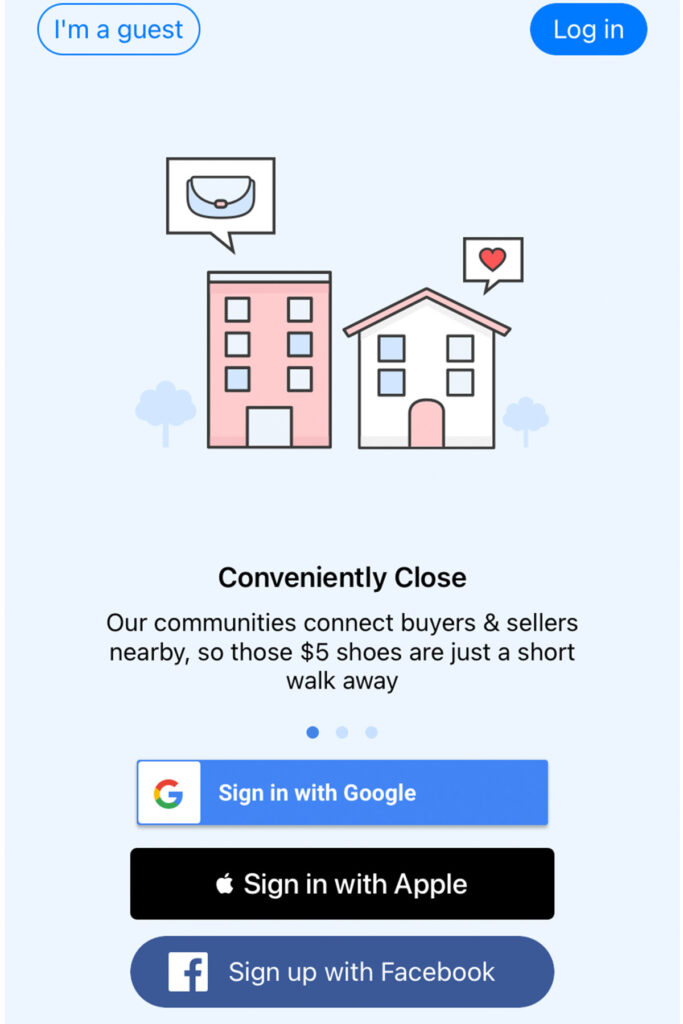
How Varage Sale Works
Once you list a couple of items, hopefully you will get messages from interested buyers. Once the details are set, you can reserve the item for your buyer and set up pick-up/meet-up details.
Varage Sale Fees
Varage Sale does not charge any fees to its sellers or buyers. Once the item sells and you collect payment in person or via phone, you can mark the item as sold on the app.
17. Nextdoor
Nextdoor began as a way to connect communities in a unique way. The app has expanded to allow for the buying and selling of goods.
How Nextdoor Works
Once you’re already logged in to your Nextdoor app, navigate to the For Sale section at the bottom of the screen. Here, you can list an item by uploading pictures, writing a title and a brief description, and assigning a price.
If a buyer is interested, they can message you directly on the platform.
Nextdoor Fees
Nextdoor keeps up with the trend of not charging fees for local transactions. However, as we discussed earlier, ensure you are tracking your sales or any profit made.
18. thredUP
thredUP operates differently when compared to the above platforms that we’ve already discussed. This platform operates on consignment only, advertising itself as an online thrift store. So if you have old clothes that you don't feel like listing one by one, this may be one of the best sites for you.
How thredUP Works
Those wanting to sell their items on thredUP first sign up for an account. From there, you can request a shipping label and kit to send your items to thredUP.
thredUP Fees
To send in your items to thredUP, the shipping label is free. There is an extra cost if you want them to mail you a bag for your items.
thredUP also charges its sellers for the processing and listing of the items, with a $14.99 charge for standard (6+ weeks) and a $22.99 cost for a rush service, which can take 2+ weeks.
This service fee is deducted automatically, upfront.
When it comes to the items they cannot accept, you can choose the option for them to reuse or recycle your items, or pay $10.99 for them to mail your items back.
19. The RealReal
The RealReal operates similarly to thredUP, basing the business on client consignment.
How The RealReal Works
Consignors can download a free shipping label to send their items to The Real Real. Alternatively, this site offers the ability to have a free, in-home consultation for your luxury items.
The RealReal Fees
The Real Real states that its consignors can earn up to 85% of the sale price for the items they send in.
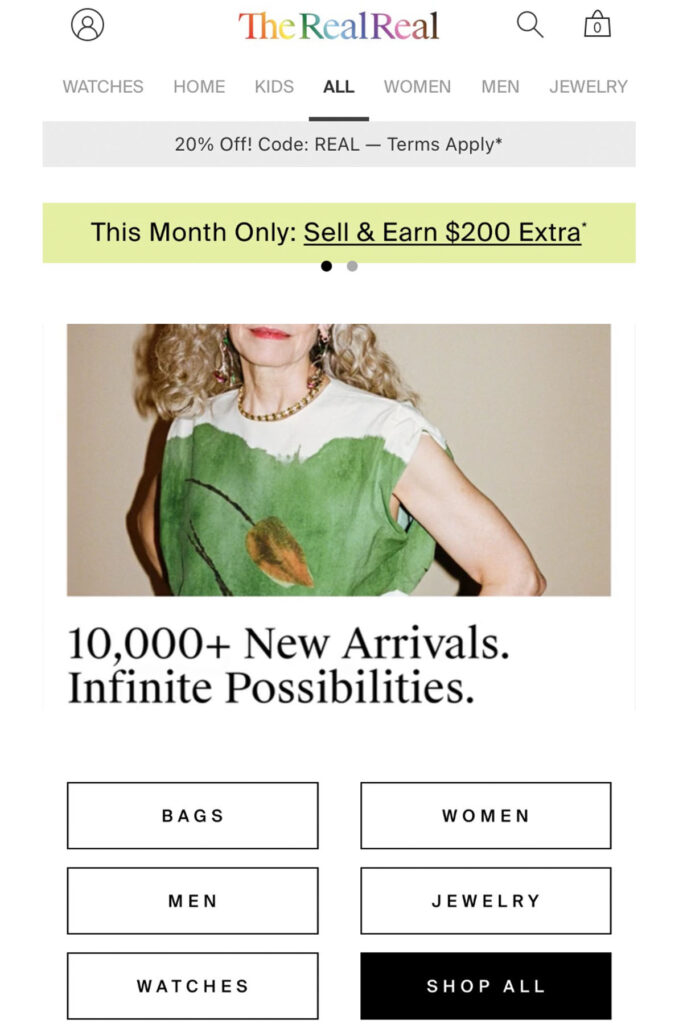
20. Thriftly
Thriftly advertises itself as a platform for selling vintage and other thrifted items. In addition to clothing items, sellers can list home decor, media, and more.
How Thriftly Works
Sellers can download the app through the app store, create an account, and you’re ready to list. It is yet another quick and easy marketplace form with just a few fields to fill out.
Thriftly Fees
Thriftly charges a 5% selling fee to its sellers.
21. Clothes Mentor
Clothes Mentor is a brick-and-mortar luxury buy-sell-trade store for women’s clothing, shoes, handbags, and other accessories. It is the sister store to Plato’s Closet, which is a more casual and trendy clothing and accessories store.
In addition to Clothes Mentor stores, this company has a website and an app for all to browse, shop, and buy.
How Clothes Mentor Works
Sellers bring their items into one of the stores to be evaluated by a worker on staff. The team member will evaluate the item by brand, condition, and style to see if it will be accepted.
Buyers can shop either online or in person. Currently, items are not accepted by mail, only in person.
Clothes Mentor Fees
Clothes Mentor states they price their items at ⅓ to ½ of the original retail price, then give their sellers ⅓ to ½ of that price for their items. Sellers receive cash on the spot for their items.

22. Shopify
Shopify can be a complex platform like eBay due to the many options and customizations the site has. However, Shopify allows sellers to have more freedom over their business when compared to other platforms.
How Shopify Works
Sellers have to sign up for a monthly store subscription plan. There are three options: Basic, Shopify, and Advanced. Sellers have to set up their own online store and site structure, which can come with a definite learning curve.
Luckily, Shopify offers new sellers a free trial plus their first paid month for only $1.
Shopify Fees
- Basic - $39 per month
- Shopify - $105 per month
- Advanced - $399 per month
In addition to the monthly store fees, there are credit card processing fees ranging from 2.4%-2.9% + $0.30.
23. Zara Pre-Owned
Zara has created its own platforms to offer its customers to extend the lives of their Zara items, called Zara Pre-Owned.
How Zara Pre-Owned Works
Those wanting to sell their pre-loved Zara items can go directly to Zara to list their items. You will be required to find your item in a catalog for the basic info, take pictures, and write a description.
Once your item(s) sell, you will receive a prepaid shipping label.
Zara Pre-Owned Fees
Sellers on Zara’s platform will receive 100% of the sale price.
24. Patagonia Worn Wear
Patagonia’s Worn Wear program operates similarly to Zara. Patagonia customers can trade in the items they no longer want anymore to Patagonia themselves.
How Patagonia Worn Wear Works
The program offers customers store credit for trading items they no longer want. Ensure the item is in good condition because Patagonia will not return items that are not accepted for credit.
Patagonia Worn Wear Fees
There is a $7 flat fee for a shipping label to send your items in.
After that, for all accepted items Patagonia states they give the customer up to 50% of the resale price of the item. On their website, there is a guide that customers can look at to see how much credit they can expect.
25. Vendoo
Vendoo is an assistant tool for many of the above selling platforms that we have discussed. Vendoo allows online sellers to crosslist their items to multiple platforms.
At this time, Vendoo supports listing to Poshmark, eBay, Etsy, Mercari, Grailed, Facebook Marketplace, Depop, Kidizen, Shopify, and Vestiaire Collective, with more to come.
This way, you can list the same item on multiple platforms in order to increase your reach and exposure.
Conclusion
Well, now that we’ve gone over a whopping 25 different resale apps like Poshmark, I’m sure you’re ready to try a new platform or two.
Together, we can help promote a circular fashion industry by buying and selling perfectly good pre-loved items.
Have you heard of all of these platforms? Which ones do you sell on currently? Comment below!


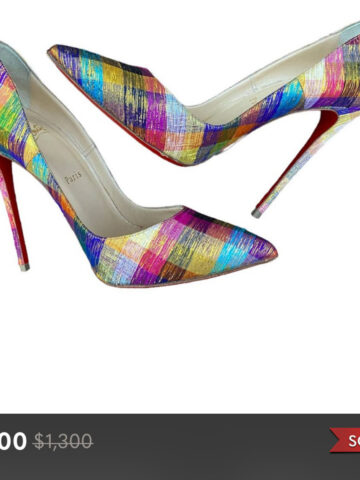



Leave a Reply